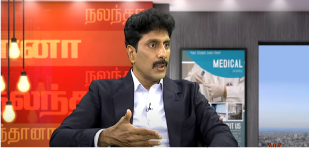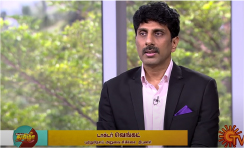Videos
Prevention

Over 1 in 10 Indians will develop cancer in their lifetime. The diagnosis of cancer may seem like a death sentence to many. But there are several ways to ensure you can nip this ailment in the bud through active prevention and early screening.
The American Cancer Society has utilised the simple word ‘CAUTION’ to remind people to listen to their bodies and consult a doctor if any one of these following problems persists
C - Change in bowel or bladder habits.
A - A sore that does not heal.
U - Unusual bleeding or discharge.
T - Thickening or lump in the breast or elsewhere.
I - Indigestion (dyspepsia) or difficulty swallowing (dysphagia).
O - Obvious changes in a wart or mole.
N - Nagging cough or hoarseness of throat.
Several factors heighten the risk of getting cancer. Some risk factors are of our own making (smoking, alcohol consumption, etc), while other risk factors are unavoidable (a family history of cancer). The prevention of cancer can be split into modifiable and non-modifiable risk factors
Modifiable risk factors refer to health behaviours and lifestyle factors. These risk factors can be eliminated by making small changes in our lifestyles and health habits.
Non-modifiable risk factors include age, race, sex, ethnic background, family history and genetics. Factors such as family history and genetics sometimes play an important role in cancer. Cancer of the breasts, colon, ovary, prostate, skin and pancreas are hereditary. If anyone in your family has a history of cancer, it is advisable that you get screened for that particular type of cancer once a year. The only way to prevent and detect these cancers at an early stage is through periodic screening.
Women ages 40 - 44 are encouraged to get annual mammograms to check for breast cancer. People with a family history of cancer are also advised to take the relevant screening tests as a precaution. Our clinic offers tests for anyone who wishes to get themselves screened for cancer. Make an appointment with us now and get tested sooner rather than later.
Cancer screening refers to the tests done to detect symptoms of cancer in the early stages. It’s best to get regularly screened and tested for cancer, especially if you have a family history of cancer. Each type of cancer has its own type of screening.
It is crucial that you understand the various screening tests available to you and the accompanying risks so you can make an informed decision regarding your health. People with an increased risk of cancer (personal history of cancer, family history of cancer, older age, etc) are advised to undergo cancer screening once a year.
At Veritas Cancer Care, you can book an appointment to discuss the screening tests required for you based on your age, lifestyle and family history.


